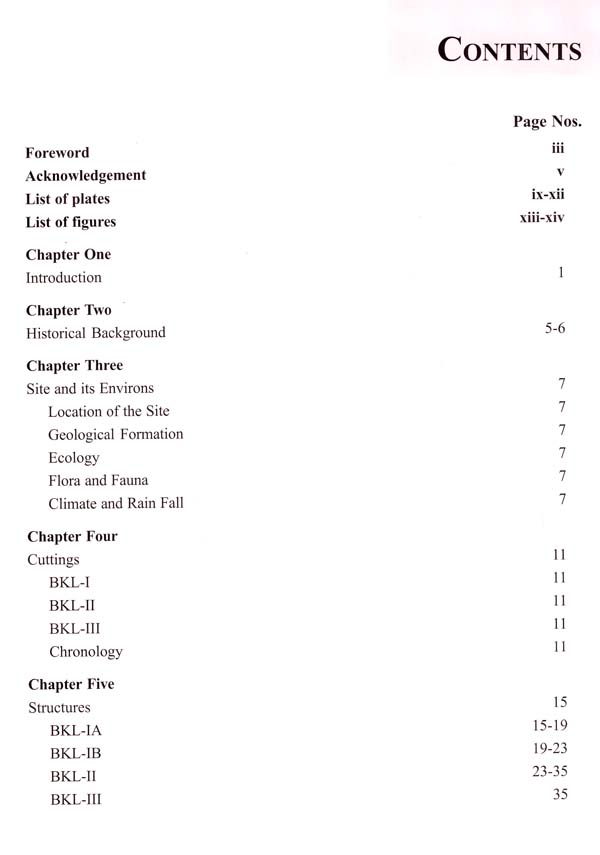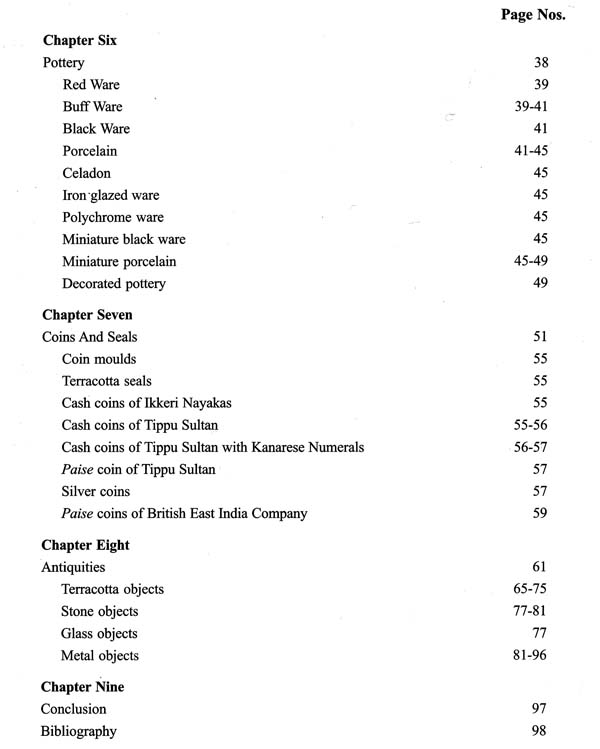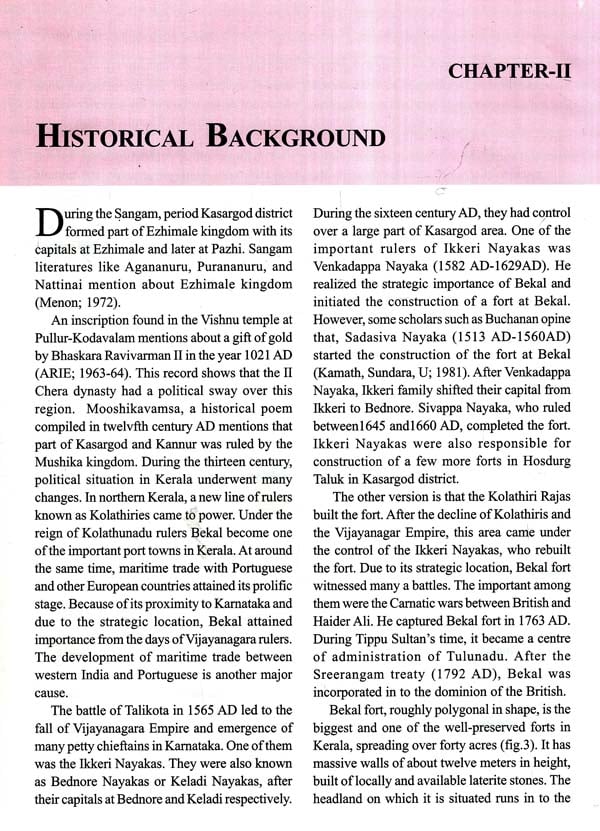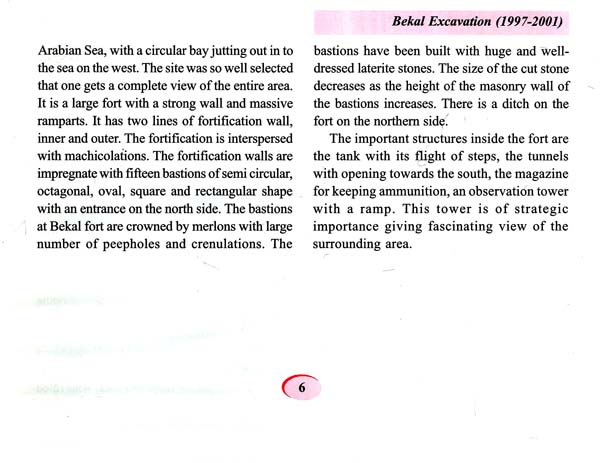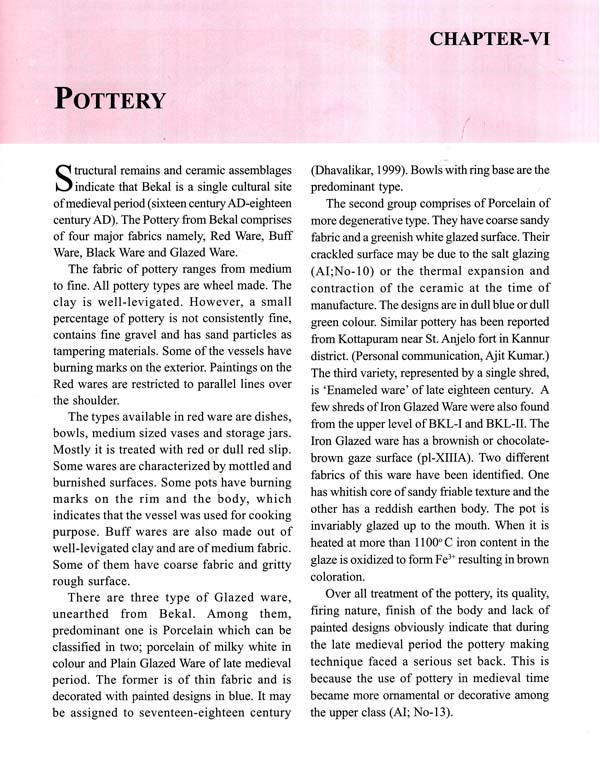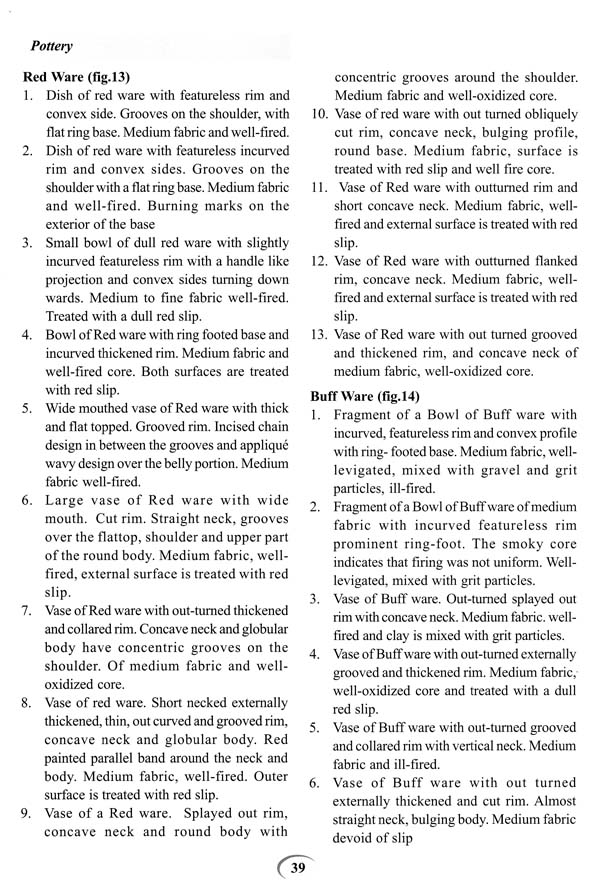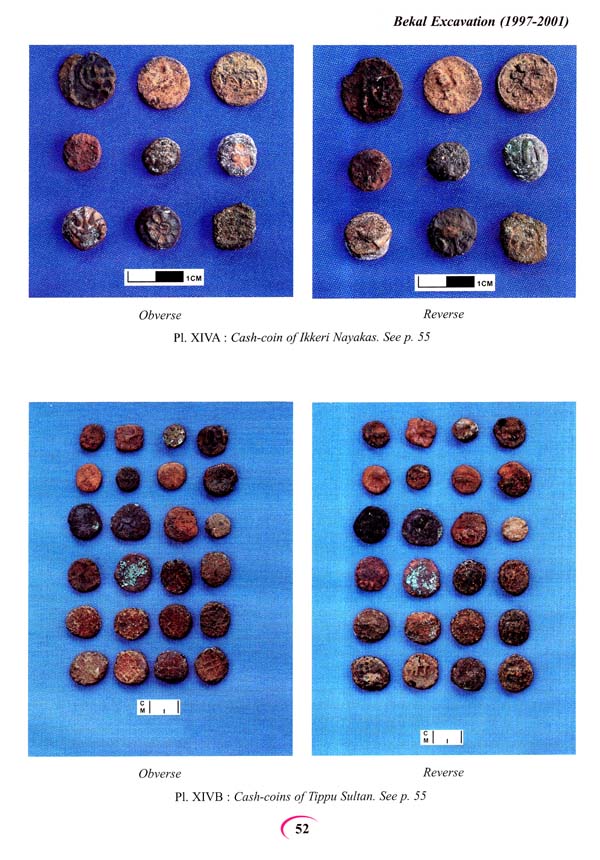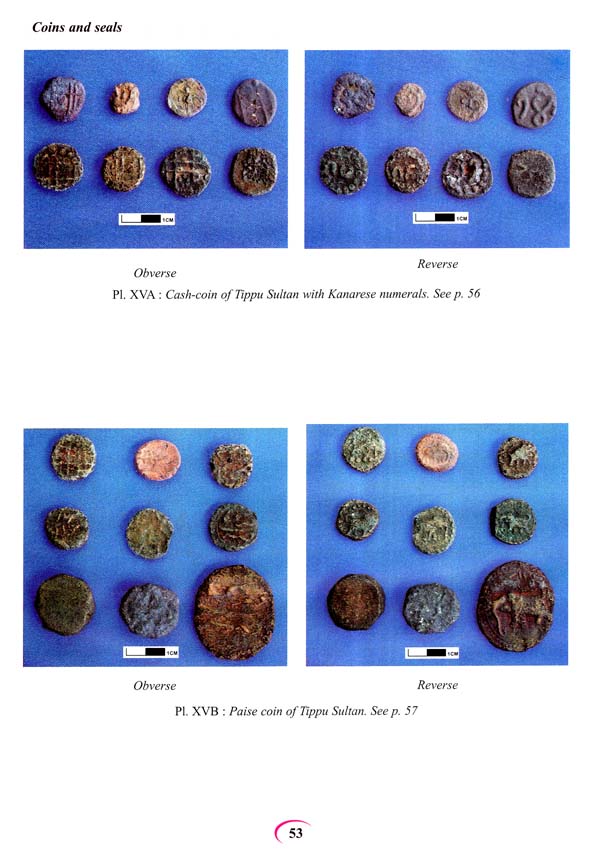
Bekal Excavation (1997-2001)
Book Specification
| Item Code: | NAW951 |
| Author: | M. Nambirajan |
| Publisher: | ARCHAEOLOGICAL SURVEY OF INDIA |
| Language: | English |
| Edition: | 2009 |
| Pages: | 98 (Throughout Color Illustrations) |
| Cover: | HARDCOVER |
| Other Details | 11.50 X 8.50 inch |
| Weight | 750 gm |
Book Description
Bekal Fort in Village Pallikkare, District Kasargod, built by Ikkeri Nayakas was under the occupation of Haider Ali, Tippu Sultan and British since the medieval times. Here the excavations were carried out for four seasons (1997-98 to 2000-01) under the direction of T. Satyamurti (the then Superintending Archaeologist, Thrissur Circle) to ascertain the cultural sequence, extent of occupation and the details of structural remains. Residential and palace complex, mint, Durbar Hall and complex are some of the important buildings. Among the antiquities, mention may be made of coins, metal objects including gold and terracotta seals. But the most noteworthy find of metal objects belong to the period of Tippu Sultan.
I would like to record my appreciation for preparing and printing of this report and also thank all those who are associated with its production. I hope, this excavation report will definitely be of great value for further work on this subject.
Bekal fort, one of the earliest and largest forts 1 in Kerala, is situated in Pallikkare Village, Hosdurg Taluk, District Kasargod (pl.IA, fig.1). During the medieval period, it played an important role in the political scenario of Northern Kerala. Originally, the fort was constructed by Ikkeri Nayakas and later was occupied by Haider Ali, Tippu Sultan and still later by the British.
The fort consists of several structural remains of historical importance. To know the cultural sequence, extent of occupation and the archaeological importance of the structural remains, an excavation was conducted in four seasons from 1997-98 to 2000-01, under the direction of T. Satyamurti, Superintending Archaeologist, Thrissur Circle assisted by M. Krishna, T. Samuel Joshuva, S. Ravichandran, M. Nagendraswamy, K. Somanna and T. Palanivel. The excavation unearthed several structural remains including residential and palace complexes, a Mint, Durbar Hall and a temple complex. More than 2000 antiquities have been recovered through this excavation. It includes the coins ofNayakas and Tippu Sultan, metal objects in gold, silver, lead and copper, terracotta seals of Vijayanagar period etc. most of the metal objects belong to Tippu Sultan period.
**Contents and Sample Pages**
